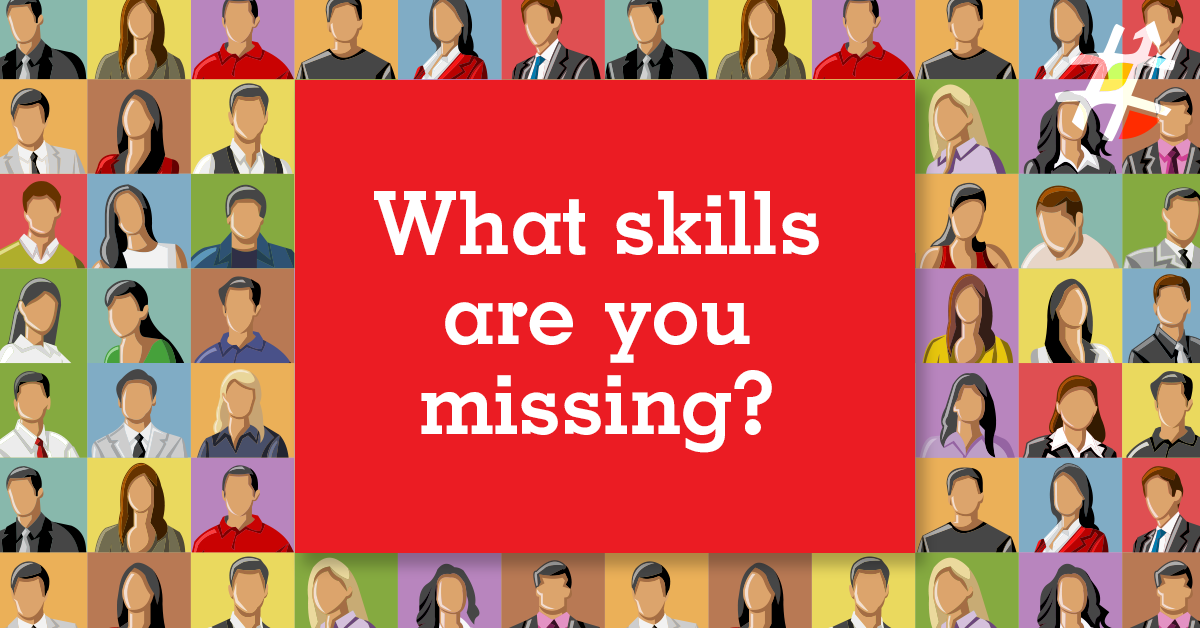Globally, procurement departments are suffering from a skills shortage. Employee benchmarking is the only way to know what areas need addressing and where you can gain a competitive advantage.
New demands require new skills
The perception of procurement has changed. Once considered a back-office function that existed solely to cut costs, the procurement department is now considered a key stakeholder capable of shaping all facets of business strategy. As procurement nuts, we’re welcoming this with open arms (while muttering ‘about time’). However, this change in perception brings with it a change in demand, and this is where a significant problem has occurred.
Put simply, procurement departments have not evolved to cope with these new expectations. There’s a significant gap in the skills employees have and the skills they need. A CIPS survey found that 56% of employers are struggling to locate talent, which soars to 73% when trying to fill leadership and executive roles. Yes, digitisation is transforming the procurement function, and many procurement officerss are still learning how to utilise powerful AI and machine learning tools. But the soft skills, the ones that have been sacred to sound procurement practice since the Bronze Age, are still lacking.
Employee benchmarking is the only solution. You can only address a skills shortage once you know where the gaps lie, and this can only be done if you’re aware of what the industry demands. This is where Skills Gap Analysis comes in.
Why benchmarking matters
Everything is relative. Knowing where the competition is at is the only way of knowing where you are at. And, of course, it doesn’t stop there. Benchmarking isn’t only about knowing where you rank within the industry; it’s about finding ways in which you can gain a competitive advantage.
There are two reasons why employee benchmarking is best done externally. Firstly, making use of a skill is different to assessing it. Just because your procurement department is essential to your organisation doesn’t mean you know how to examine an individual’s or a team’s ability in opportunity analysis, market engagement or negotiation.
Secondly, external testing removes any kind of bias. It’s hard to see people fresh when you’ve been working with them for some time. To be blunt, it’s simply unfair on the person being tested if the test isn’t being conducted by an objective party.
Employee benchmarking targets the right training
Opportunity analysis, market analysis, strategy development, market engagement, negotiation, contract implementation, supplier relationship management… you get the picture – under the procurement umbrella sit a number of skillsets. While many organisations acknowledge the shortage of expertise in their procurement department, they don’t necessarily know which areas need addressing or how to address them.
Employee benchmarking offered by Skills Gap Analysis uncovers your employees’ or teams’ knowledge (or lack thereof) and where it sits in relation to the competition. This avoids the shotgun approach, which is expensive and time-consuming. Drill down on the actual areas in which your procurement team needs improvement and see measurable gains without breaking the bank.
Shuffle the deck
An employee might be exquisitely skilled in stakeholder management but, if they’ve been assigned market analysis, they may well appear incompetent. Some managers assume benchmarking leads automatically to extra training but, often, it can simply lead to a reshuffle. Not infrequently, procurement managers are surprised to learn they have much of the key skill areas covered, it’s just that their workers have been misassigned. Shuffling the deck is sometimes all that’s needed.
Benchmark prospective employees
There’s no reason why our assessment tools can’t be directed at potential employees. The interview process can only tell us so much. Inevitably, every appointment requires a certain amount of faith. It’s always a possibility that candidates oversell themselves or genuinely think they’re more capable than their skills allow.
A good skills gap analysis will give you a detailed picture of an individual’s true skillset. You can confidently bring them on board knowing they will address a particular shortcoming in the department. If the assessment shows them to be under qualified, though, you can still send them away with a clear idea of what they need to do to make themselves more employable.
Seize the opportunity that employee benchmarking presents
There’s a lot being demanded of procurement departments today. It creates stress, but also opportunity. It’s not just you – countless surveys have found that most procurement departments are struggling to find the skills that meet the requirements. In this environment, the team that upskills now is the one that reaps the benefits. Get in touch with Skills Gap Analysis today and get a jump on your competition.








